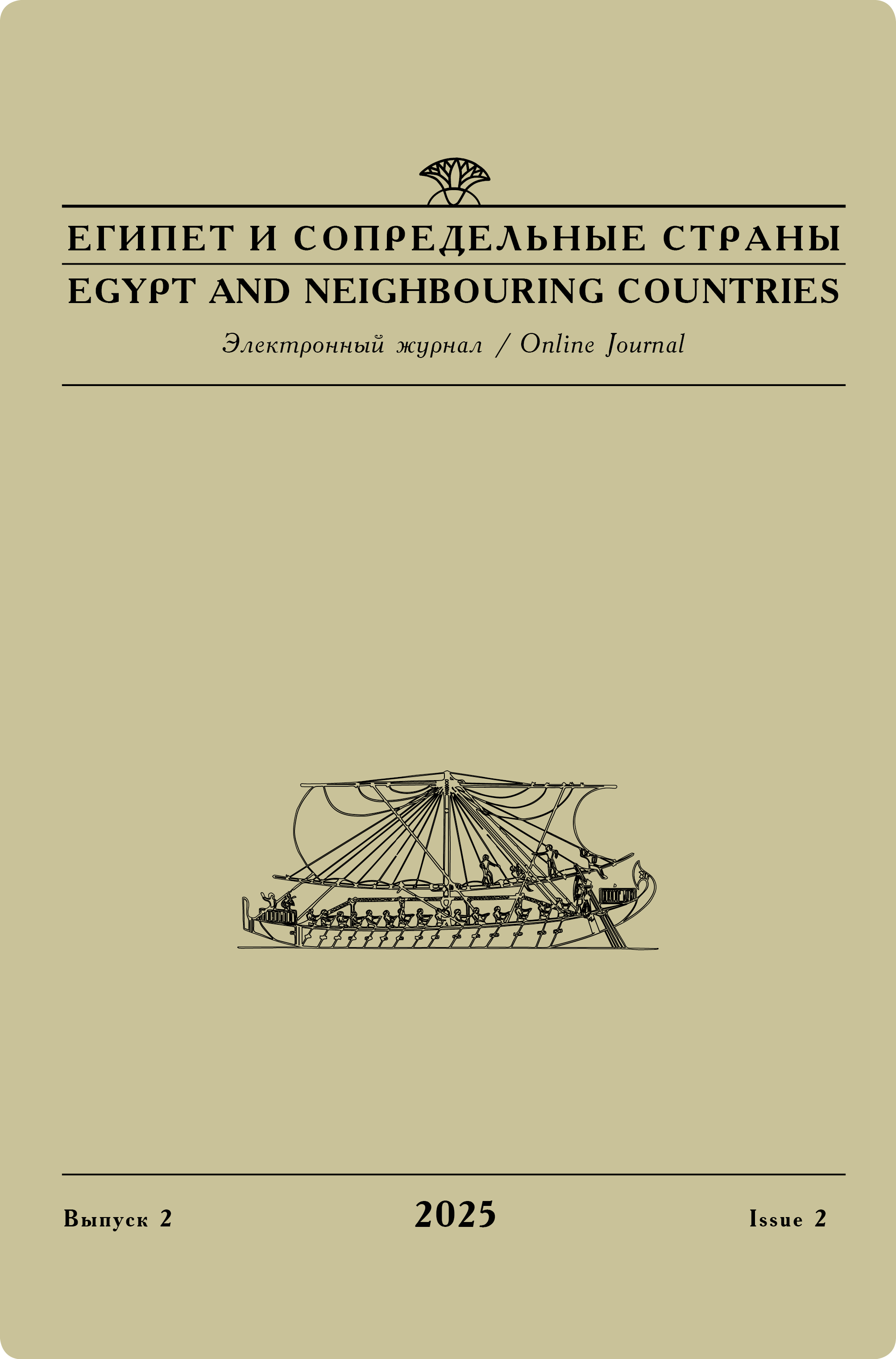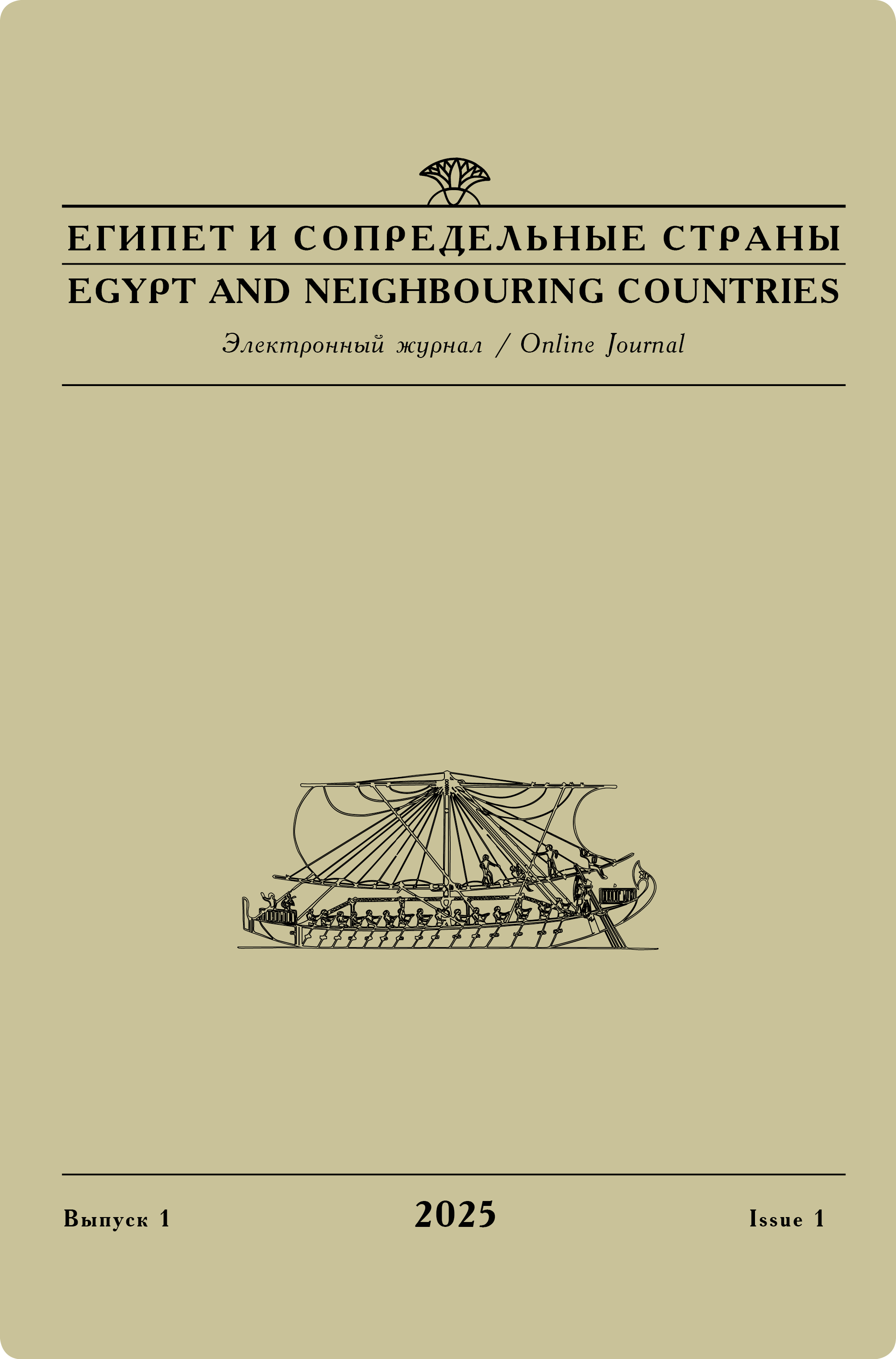Issue 2, 2022
V. I. Yarmolovich
Egipetskoe vliianie na napatskoe goncharstvo v VIII–IV vv. do n. e. (na primere keramicheskogo materiala iz Gebel'-Barkala, Sudan) [Egyptian influence on Napatan pottery craft in the 8th–4th c. BCE (evidence from the excavations at Gebel Barkal, Sudan)]
The paper presents an investigation of Egyptian influence on Napatan pottery craft of the 8th–4th c. BCE. Storage jars with grooved rims which are published for the first time have been discovered in Napata, the Kushite capital (modern Sudan). The fragments of these storage jars have been found in the Trench 1. The trench was dug on the territory of pottery dump by the Russian-Sudanese archaeological mission to Gebel Barkal. These fragments have morphological features that are typical of Egyptian storage jars with grooved rims. In Egypt they first appeared in the Third Intermediate Period (late 8th c. BCE) and existed until the early Ptolemaic Period.
The storage jars that were discovered by the Russian-Sudanese expedition are Egyptian imports as well as local, that is Nubian, imitations and adaptations. Pottery from the Trench 1 can be dated to various periods (from the New Kingdom to Meroitic period). The parallels from other Sudanese sites allow us to date the storage jars with grooved rims from Gebel Barkal to the late 8th — 4th c. BCE (the Napatan period). They are evidence of Egyptian impact on Napatan pottery tradition which was the result of long-standing relations between Egypt and the Kingdom of Kush.
Keywords:
material culture, intercultural contacts, pottery, Napata, Kingdom of Kush, Gebel Barkal, storage jar.
Original language — Russian.
DOI: 10.24412/2686-9276-2022-00007.
Referring: Yarmolovich V. I. Egyptian influence on Napatan pottery craft in the 8th–4th c. BCE (evidence from the excavations at Gebel Barkal, Sudan) [in Russian] // Egypt and neighbouring countries 2 (2022): 69–94. DOI: 10.24412/2686-9276-2022-00007.
Read full article




